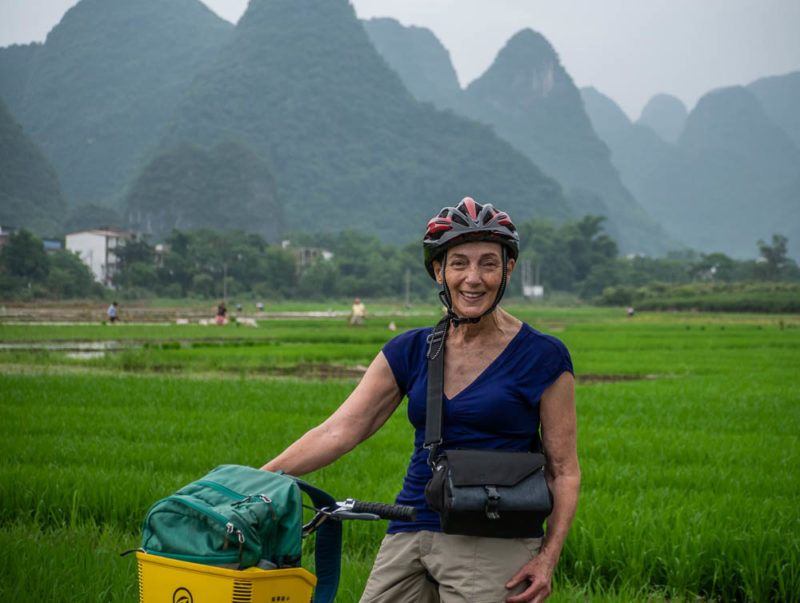20 New Pieces Of Advice To Culinary Experiences Across China
20 New Pieces Of Advice To Culinary Experiences Across China
Blog Article
Top 10 Tips For Street Food Safety In China
1. Tip: Go for vendors that have lengthy lines and a high turnover because fresh ingredients are more likely to be used.
Pro: A high volume of goods indicates that they are popular and in high demand with locals.
Con: Waiting in lines can be a time-consuming experience.
2. Observe Hygiene Practices
Tip: Look for vendors wearing gloves and keep their tables tidy, and don't handle food with bare hands.
Pro: Reduces the risk of foodborne illness.
Cons: High hygiene standards might limit your choices.
3. Avoid Uncooked Foods
Avoid eating raw foods like raw fruits and meats, vegetables, chicken, as well as eggs that are not cooked.
Pro: Food that has been cooked is less likely raw food items to cause foodborne illness.
Con: Your options are limited, and you might be enticed by food that is raw, such as sushi.
4. Inspect Ingredients
Check out the scent and appearance the food items. Fresh food must have a bright appearance, and not have a bad smell.
Pro helps you avoid spoilt or poor-quality ingredients.
Cons: It can be hard to gauge freshness when you're new to the market.
5. Buy Boiled or Bottled beverages
If you're looking to avoid drinking tap water that is contaminated use bottled or canned water. Also, you can make tea with boiled boiled water.
Pro: Protects your body from waterborne illnesses.
Cons: Limited options, particularly at street vendors.
6. Start Small
Tip: Try a tiny portion of unfamiliar foods first to observe how your body reacts.
Reduces the risk of having serious digestive issues.
Cons: The food might not be enough to satisfy your needs even if the food is healthy and delicious.
7. Beware of ice in drinks
Beware of ice cubes since they are made from tapwater that is not treated.
Pro: Keeps you safe from potential contamination of water.
Con: Drinks are less refreshing if it is hot.
8. Buy freshly prepared food
Tips: Choose food that has been prepared directly in front of your eyes.
Pro: Reduces the risk of contamination from exposure to prolonged radiation.
Con: Some pre-prepared street food items might be irresistible or irresistible.
9. Carry hand Sanitizer
Use wet wipes or hand sanitizers when eating, if you are unable to clean your hands.
Pro: It reduces the risk of spreading germs to food.
Con: It may be difficult to transport other items.
10. Trust Your Instincts
Tip: If you notice something that looks or smells bad avoid eating it, no matter how tempting it may appear.
Pro: You can stay clear of food items that can cause illness.
Cons: Over-caution could result in being deprived of authentic experiences.
Street Food in China: Pros and Cons
Street food is usually inexpensive and full of flavor.
Convenient: You are able to take a quick lunch or snacks from the vendors found all over.
Enjoy the culture of local cuisine by dining at street stalls.
There are a variety of options including Jianbing, (savory crepes) as well as Chuan'r (grilled skewers) There's an array of options.
Pros and Cons of Street Food in China
Hygiene Concerns : Foodborne diseases are a possible risk particularly in less well-known establishments.
Allergic reactions: Certain ingredients are not disclosed. This could pose an obstacle for people with allergies.
The language barrier could make it difficult to understand the ingredients or how they are prepared.
Overeating temptation: The wide range of food options can cause you to overeat, which can cause stomach upset.
These safety tips will assist you in enjoying China's bustling street food culture and minimize your chances of becoming sick. Read the most popular find travel ideas for this location for site info including shopping in dunhuang, jiuzhaigou, shanghai portman acrobatic show one of the best acrobatic shows in shanghai, eating in lanzhou, eating in lanzhou, china built the worlds deepest high speed railway station under the great wall, mount li a royal garden since the zhou dynasty, chinese furniture the development history of chinese furniture, kashgar tour maps, shanghai portman acrobatic show one of the best acrobatic shows in shanghai and more.
Top 10 Tips For The Best Time To Visit Famous Temples In China
1. Visit during the off-season (Autumn/Winter)Tip Take a look at visiting the popular temples in China during the off-season (autumn or winter) usually between November and February. The weather is cooler and there will be less visitors.
Pro: A less busy. Provides a serene and serene space.
Cons: It could be more cold and uncomfortable visiting temples in the cold.
2. Be prepared for extreme weather
The temperature can vary greatly during different seasons. The winters can be incredibly cold, while summers get scorching. Check the forecast and pack according to the forecast.
Pro Tip: Prepare yourself for any weather conditions, and take pleasure in your trip in comfort.
Cons: It can be difficult to prepare for extreme weather conditions, especially when you are traveling with a light load.
3. Spring and Summer Visits for Vibrant Flora
Visit temples during spring or the summer months to admire beautiful gardens and blooming flowers. You can also be awed by the lush scenery around the temples.
Pro: Gorgeous landscapes add to the overall experience of touring the temple grounds.
Con The summer months in the US can be extremely hot and packed. This is especially the case on National holidays.
4. Take into consideration festivals and special events.
Plan your visit to coincide with traditional festivals such the Chinese New Year (January/February) as well as the Mid-Autumn Festival. These events permit you to participate in ceremonies, rituals and experience the vibrant traditions of the temple.
Pro: Temples frequently have lively traditional celebrations and offer a unique, exciting experience.
Con: Temples tend to be extremely busy, and hotel rates can increase in the summer months of festivals.
5. Beware of Peak Holiday Seasons
Tips Refrain from visiting during peak tourist seasons (e.g., Chinese New Year, Golden Week in October) where temples are filled with local as well as international visitors.
Pro: A more tranquil time without crowds.
Con: You might not be able to catch some of the special events if you're in the area during peak times.
6. Check Temple Closures during Winter
A tip: Some temples could have limited hours or be closed during the winter months, particularly in more remote regions or northern regions. Be sure to check the hours ahead of time.
Avoid unnecessary trips by planning ahead.
Con: Some temples may have hours that are reduced or entirely closed during renovations, leading to disappointment.
7. Early Morning Visits in the Summer
TIP: If you plan to visit during summer, be sure to get there early in the morning to avoid the intense midday heat. A lot of temples are be open from dawn. This is a tranquil period with fewer visitors.
The cooler temperatures and absence of crowds makes for more relaxing vacation.
Con: Requires an early morning, which may not be suitable for all.
8. Be prepared for rain during the summer
In the southern part of China there are heavy rains that can be expected during summer months. If visiting during this season bring an umbrella or rain gear to ensure you are comfortable.
You can still appreciate the magnificence of the temple even in the event of rain.
Con: Rain can cause disruption to outdoor activities or leave the grounds of temples slippery.
9. In Autumn, visit temples in mountainous areas
Tip: Autumn is an ideal time to visit temples in mountainous areas (e.g., Mount Wutai or Mount Emei) as the temperature is mild, and the autumn foliage creates stunning landscapes.
Pro: The views and cooler temperatures make outdoor activities and hiking more enjoyable.
Con: Popular mountain temples have a tendency to draw crowds particularly on weekends and holidays.
10. Check out the Lunar Calendar for Specific Events
Tip - Many temples in China make use of the lunar calendar. Certain events and rituals are also tied to certain lunar dates. Study the calendar in order to attend significant events like the Lantern Festival, Buddha's Birthday, or other temple ceremonies.
Pro: Unique cultural experiences as well as deeper insights into local spiritual practices.
Cons: Planning and researching your trip around the lunar schedule could take longer, and you may discover that the lunar calendar does not align with your travel dates.
The advantages of a seasonal visit to Chinese temples
A smaller crowds on off-season visits provide a tranquil and reflective experience.
Festivals and Cultural Events: They provide an opportunity to learn more about the local cultural and religious traditions.
Scenic Beauty. In the spring or autumn, you are great times to enjoy stunning landscapes. The vibrant gardens around temples are also a great alternative.
Cooler temperatures: The autumn and the winter are ideal for exploring temples.
Cons of Visits to Chinese Temples during the season
Unpredictable Weather: Winter may be cold and summer can be hot, which could affect your well-being.
Some temples are closed during extreme weather or during off-season.
Afraid of crowds during festivals: The most popular holidays and festivals can bring large crowds that make it difficult for people to fully experience the temple's tranquil atmosphere.
Limited Activities: Some special events or celebrations are not possible when you are visiting outside of the right time frame.
When you select the appropriate time for your visit and making plans accordingly, you will guarantee a more pleasant and meaningful experience at the famous temples of China. Understanding the seasonal dynamics, will help you maximize your experience. Have a look at the top rated explore the wonders of this attraction for site recommendations including xiang cuisine.html, eating in guiyang, xishuangbanna, the color of dress in china, eating in lanzhou, zhangjiajie tour maps, entertainment in hong kong, binhai aircraft copyright theme park in tianjin, shopping in nanjing, entertainment in beijing and more.